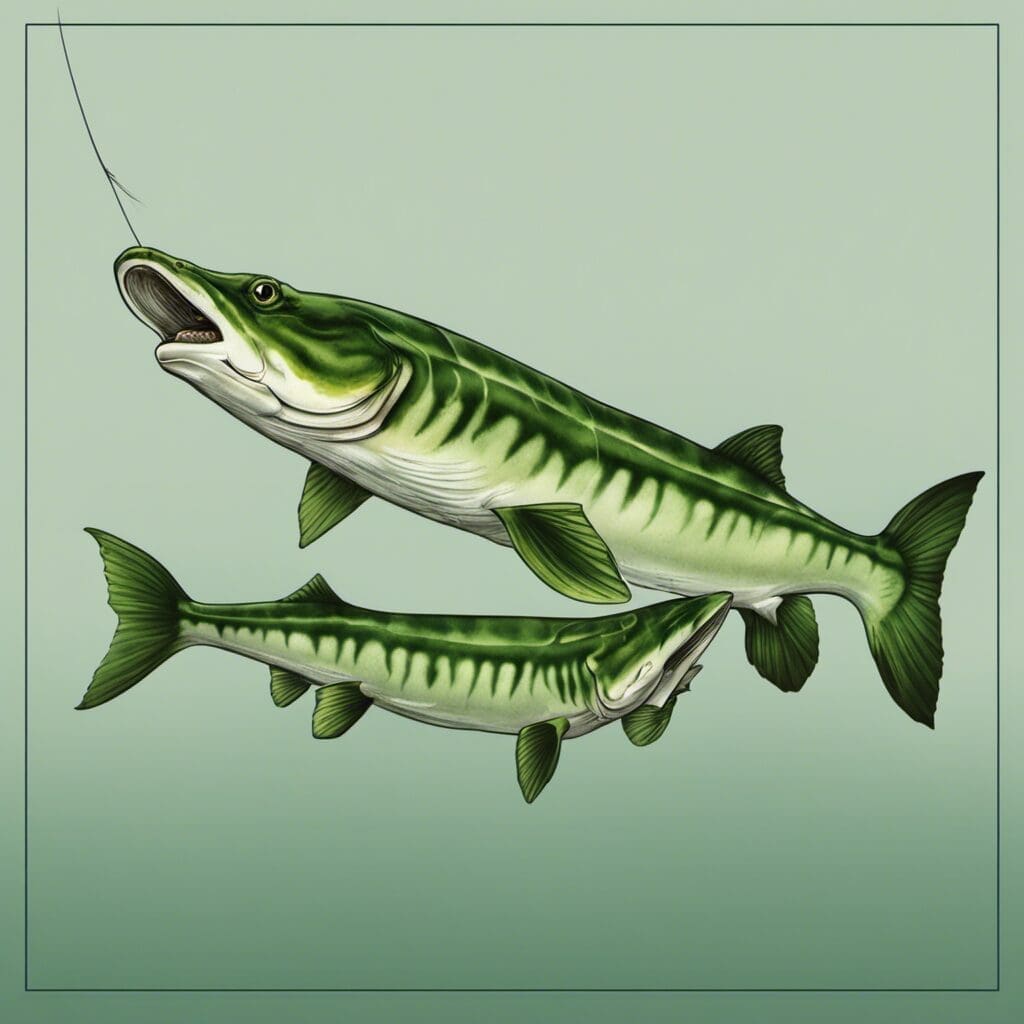Introduction
The Green Sturgeon (Acipenser medirostris) is a species of sturgeon, a member of the Acipenseridae family. Known for its prehistoric appearance and enormous size, it is a species of interest for both professional and enthusiast anglers alike.
Conservation Status
The Green Sturgeon is currently listed as “Near Threatened” by the International Union for Conservation of Nature (IUCN). Conservation efforts are underway with measures such as habitat restoration and stricter fishing laws aimed at preventing overfishing and protecting this ancient species.
Statistics
| Statistic | Average | Range |
|---|---|---|
| Length | 1.5-2 meters | 1-2.5 meters |
| Weight | 45 kg | 30-85 kg |
| Average Lifespan | 60 years | N/A |
Distribution
The Green Sturgeon is native to the Pacific Ocean, with a range extending from the Gulf of Alaska to Ensenada, Mexico. During their seasonal migrations, they move into the large rivers and estuaries of the Pacific Northwest and California to spawn.
Habitats
Green Sturgeons are typically found in marine and estuarine waters, but they can also exist in freshwater environments. They are known to inhabit depths up to 60 meters and prefer water temperatures of around 17-19 degrees Celsius.
When and Where to See
The best time to spot Green Sturgeons is during their spawning seasons, which occur from March through July. During this time, they often can be seen in shallow waters or near the water’s surface, especially during the early morning or late evening hours.
Best Fishing Locations
- Columbia River, Oregon/Washington
- Sacramento River, California
- Eel River, California
- Fraser River, British Columbia
- Klamath River, Oregon/California
- Rogue River, Oregon
- Snake River, Idaho/Washington
- Frasier River, Canada
- Willapa Bay, Washington
- Quillayute River, Washington
How to Catch
Green Sturgeons are typically caught using heavy tackle and large hooks, baited with fish or shellfish. Best times to fish are during their spawning season and just after sundown or before sunrise.
Identification Guide
This species of sturgeon is identifiable by its olive green color, elongated body, narrow snout and rows of bony plates known as scutes. They are typically larger and have a narrower head shape than the closely related White Sturgeon.
Culinary
While Green Sturgeons are primarily sought after for their roe (eggs), which is used to make caviar, their flesh is also edible and has a delicate, mildly sweet flavor.
Additional Information
Green Sturgeons are bottom-feeders, consuming a diet mainly consisting of invertebrates such as crustaceans and small fish. They are slow to reach sexual maturity, with males maturing at around 15 years and females not until their mid-20s. Predators include marine mammals like sea lions and seals, as well as larger fish species.
References and Further Reading
For those interested in learning more about the Green Sturgeon, the following resources are recommended:
- NOAA Fisheries – Green Sturgeon
- IUCN Red List – Green Sturgeon
- California Department of Fish and Wildlife - Sturgeon Fishing
- Northwest Fisheries Science Center – Status Review of Green Sturgeon

